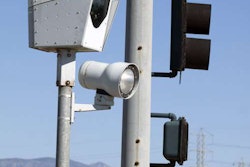Every time hours of service comes under analysis – and that’s been a lot over the last decade – drivers and carriers have to point out the obvious to regulators. That is, trucking is a huge, multi-faceted industry, and likewise the types of hauls and schedules of drivers are all over the board. Trying to find one set of hours regs that fits everyone is like trying to find one clothing outfit that pleases every woman in the world.
 Jeff Clark, 54, has been driving 25 years. He’s leased to Paper Transport of Green Bay, Wis.
Jeff Clark, 54, has been driving 25 years. He’s leased to Paper Transport of Green Bay, Wis.Truckers’ simple mantra has been: “Let me drive when I’m rested, and rest when I’m tired.” Of course, aggressive dispatchers, and in some cases willing truckers, are all too eager to abuse the second half of that precept. So regulators feel they have to do something, and we all know the messes these good intentions have birthed, especially the new regs that took effect this month.
One partial solution advocated by well-known driver Jeff Clark in his 2008 book, “Hey We’re Dying Out Here: The Truth Behind The Trucker Shortage,” is what he calls a Gold Card system. After a given number of miles (or years) with no violations or at-fault wrecks, a driver would earn the card. This status would bring freedom from hours of service regs on the assumption that this is an experienced, safe, mature driver who knows to drive when rested and rest when tired.

For fleets, “It would be a feather in your cap to have a high percentage of Gold Card drivers,” Clark says. The bragging rights would help with customers as well as potential driver recruits.
The designation would do even more for drivers. Their proven expertise should enable them to command higher pay. For younger drivers still accumulating safe miles, it would give them something to aspire to beyond tiny pay increases.
Greater flexibility for rest would also help drivers as they age. Assuming many drivers earn their card in their 40s or 50s, it would be quite welcome for those subjected to lots of nighttime driving. Studies of circadian cycles – the body’s normal daily rhythms – show that starting around age 40, it becomes much harder for people to adjust when job schedules demand night work on an irregular basis.
“If I have a bad’s night sleep, it messes me up for three or four days,” says Clark, 54.
One obvious flaw in the concept is that fleets, as well as unscrupulous drivers, could abuse the freedom from hours of service. “I would hope it’s quite a status and you wouldn’t want to risk anything,” Clark says. No doubt some fleets would exploit the advantage no matter what, but at least drivers with the card as a bargaining chip would have no trouble finding a good fleet eager to hire them.
Also, one possibility to mitigate that abuse is that such a program might have, instead of complete freedom from logs, a more liberal hours of service regimen that Gold Card drivers adhere to. For example, total on-duty hours would be limited, but times for resting would be extremely flexible.
A system like this would be only a partial solution, but a definite improvement. As it is, regulators treat drivers as helpless clones. The reality is they are varied individuals and their jobs are equally varied. Some drivers are smarter and more disciplined than others. For them, more freedom to control their difficult work schedules isn’t too much to ask.













